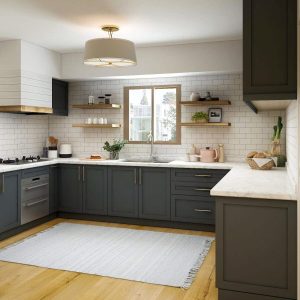
The Noguchi Table
Perhaps the most famous of Noguchi’s designs is the Noguchi table. Originally designed in 1944 as a commission for the president of MoMA, the Noguchi table has become an iconic piece of furniture in homes and public spaces around the world. The table’s simple design features a glass top supported by two curved wooden legs that intersect beneath it. The clean lines and organic shapes of the table make it a perfect example of Noguchi’s signature style of combining nature and modernism in his designs.
The Influence of Japanese Aesthetics
Noguchi’s Japanese heritage was a significant influence on his work, evident in the simplicity and minimalism of many of his designs. The Noguchi table’s use of natural materials and its elegantly simple design is an example of this influence. Noguchi believed that design should be both beautiful and functional, and the Noguchi table is a perfect example of how he achieved this balance.
The Akari Light Sculptures
In addition to furniture design, Noguchi was also known for his lighting. The Akari series of light sculptures, designed in the 1950s, are perhaps his most famous lighting pieces. Made from handmade washi paper and bamboo ribs, the Akari lamps are inspired by traditional Japanese lanterns. However, Noguchi’s designs take these traditional forms and elevate them to a new level of elegance and beauty.
The Intersection of Art and Design
What makes the Akari light sculptures so significant is that they are more than mere lighting fixtures – they are works of art. Noguchi believed that design and art were not mutually exclusive, and the Akari series is a perfect example of this philosophy. The intricate patterns created by the washi paper and bamboo give the lamps a delicate beauty that transcends their functionality.
The UNESCO Building Interior
Noguchi’s interior design work wasn’t limited to furniture and lighting. He also designed the interior of the UNESCO Building in Paris in the 1950s. The building’s interior features a stunning spiral staircase that serves as both a functional element and a work of art. The design of the staircase incorporates natural elements such as stone and water, creating a sense of harmony between the building and its surroundings.
The Importance of Context
Noguchi’s design philosophy was grounded in the belief that design must take into account its context. In the case of the UNESCO Building, the design of the interior was informed by the building’s purpose as a center for international cooperation and understanding. The spiral staircase serves not only as a functional way to move between floors but also as a metaphor for the interconnectedness and interdependence of the world’s cultures.
Isamu Noguchi was a visionary designer whose impact on the world of interior design is still felt today. From the simplicity and elegance of the Noguchi table to the intricate beauty of the Akari light sculptures, Noguchi’s designs continue to inspire and influence designers around the world. What makes Noguchi’s work so enduring is his ability to combine the organic with the modern, the functional with the beautiful, and the traditional with the innovative. His designs are more than just furniture and lighting – they are works of art that elevate the spaces they inhabit.







